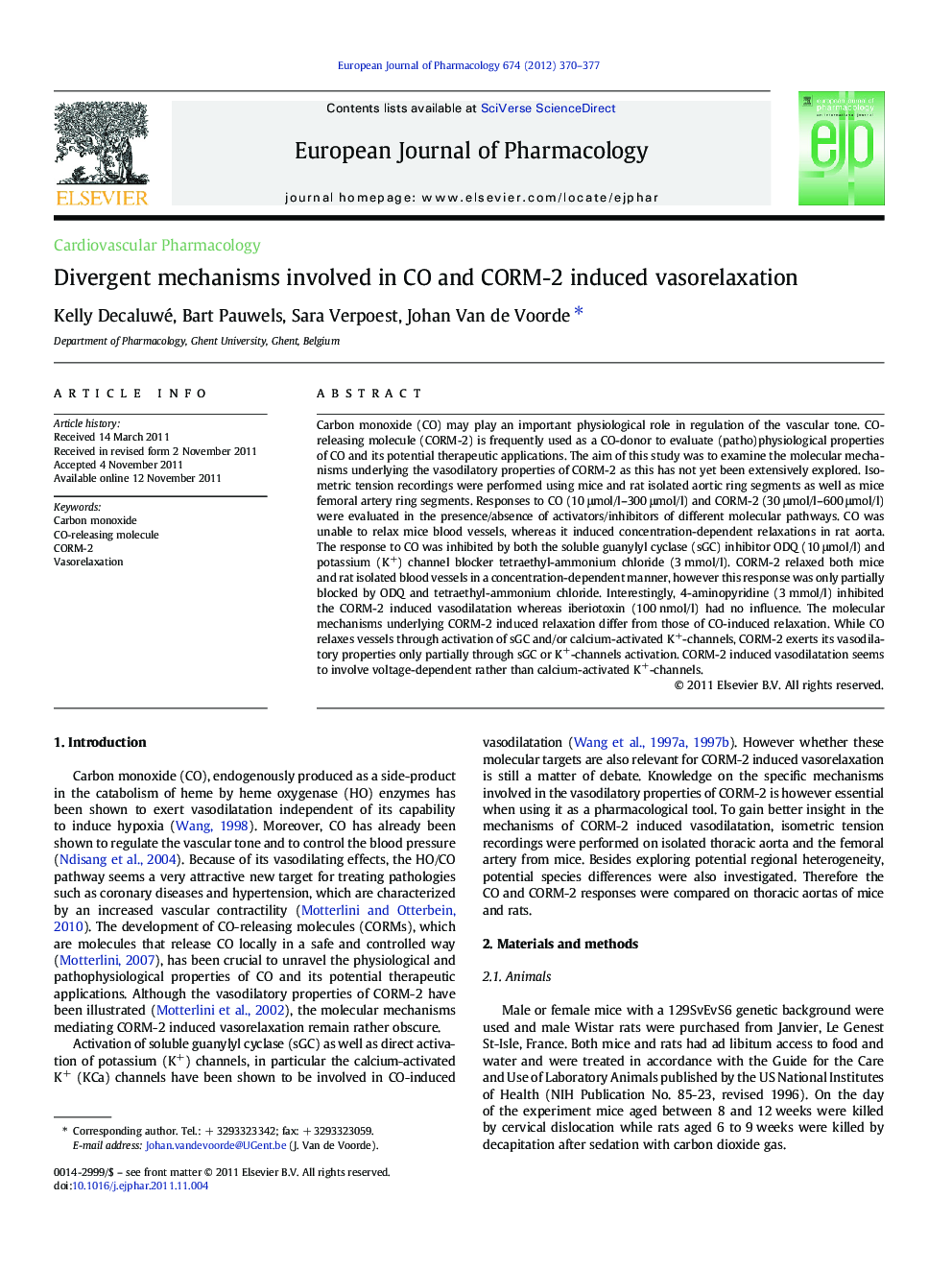| Article ID | Journal | Published Year | Pages | File Type |
|---|---|---|---|---|
| 5829894 | European Journal of Pharmacology | 2012 | 8 Pages |
Abstract
Carbon monoxide (CO) may play an important physiological role in regulation of the vascular tone. CO-releasing molecule (CORM-2) is frequently used as a CO-donor to evaluate (patho)physiological properties of CO and its potential therapeutic applications. The aim of this study was to examine the molecular mechanisms underlying the vasodilatory properties of CORM-2 as this has not yet been extensively explored. Isometric tension recordings were performed using mice and rat isolated aortic ring segments as well as mice femoral artery ring segments. Responses to CO (10 μmol/l-300 μmol/l) and CORM-2 (30 μmol/l-600 μmol/l) were evaluated in the presence/absence of activators/inhibitors of different molecular pathways. CO was unable to relax mice blood vessels, whereas it induced concentration-dependent relaxations in rat aorta. The response to CO was inhibited by both the soluble guanylyl cyclase (sGC) inhibitor ODQ (10 μmol/l) and potassium (K+) channel blocker tetraethyl-ammonium chloride (3 mmol/l). CORM-2 relaxed both mice and rat isolated blood vessels in a concentration-dependent manner, however this response was only partially blocked by ODQ and tetraethyl-ammonium chloride. Interestingly, 4-aminopyridine (3 mmol/l) inhibited the CORM-2 induced vasodilatation whereas iberiotoxin (100 nmol/l) had no influence. The molecular mechanisms underlying CORM-2 induced relaxation differ from those of CO-induced relaxation. While CO relaxes vessels through activation of sGC and/or calcium-activated K+-channels, CORM-2 exerts its vasodilatory properties only partially through sGC or K+-channels activation. CORM-2 induced vasodilatation seems to involve voltage-dependent rather than calcium-activated K+-channels.
Related Topics
Life Sciences
Neuroscience
Cellular and Molecular Neuroscience
Authors
Kelly Decaluwé, Bart Pauwels, Sara Verpoest, Johan Van de Voorde,
